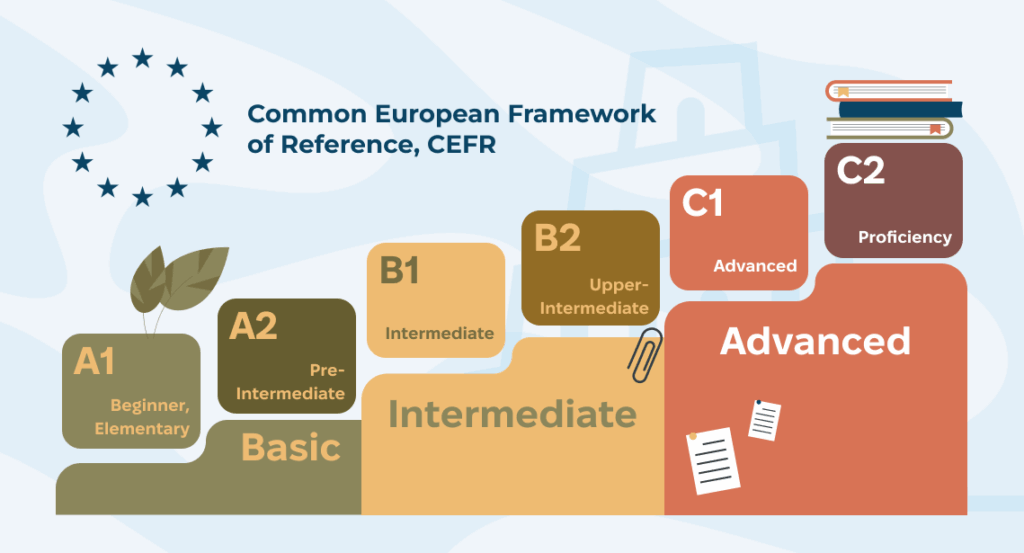How to Describe Language Skills in a Resume

In today’s job market, knowing several languages is not just an advantage — it’s a powerful tool that can determine the fate of your career. Whether you’re applying for a position in IT, customer service, or translation, listing your language proficiency levels on resume demonstrates flexibility, collaboration skills, and readiness to work in an international environment.
Let’s take a look at how to describe your language ability on resume, how to indicate your level accurately, avoid common mistakes, and confirm your qualifications. In addition, we’ll provide examples and recommendations to help you make the language section resume clear, professional, and easy to understand for any recruiter.
Why it’s important to indicate language skills
For many jobs, language skills on resume can be a deciding factor. Even if the position isn’t directly related to translation or international communication, listing your linguistic skills in resume demonstrates communication ability, discipline, and a desire to grow.
Today, about 30% of companies in Ukraine have foreign partners or clients, so proficiency in English, German, or Polish significantly broadens career opportunities. According to LinkedIn, candidates who include at least one foreign language receive 20–30% more recruiter responses — especially in marketing, IT, and customer support fields.
“Language is not just a skill; it’s a tool that opens new markets, connections, and opportunities.”
Beyond the professional side, language proficiency in resume also reflects cultural awareness, tolerance, and the ability to work in a multicultural team — traits highly appreciated in international companies, startups, and global projects.
Where to list language skills on your resume
The language section in resume can be presented in several ways, depending on your CV format and professional field.
1. Dedicated “Languages” section
This is the most common method. Place it near the end of your resume after the “Education and Skills” section. This works best for international templates that include a separate language proficiency CV section.
Example:
Languages
- Ukrainian – Native
- English – Upper-Intermediate (B2)
- Italian – Intermediate (B1)
2. “Professional Skills” section
If language is part of your daily work — for instance, you’re a translator, copywriter, or content creator — it’s best to include your language proficiency in resume alongside professional competencies.
Example:
Key Skills:
- Copywriting in English and Italian
- Translation (EN–UA, IT–UA)
- Communication with international clients
3. “Summary” or “Profile” section
If languages are your strong point, mention them in your summary. This helps immediately capture the recruiter’s attention and show strong language ability on resume.
How to correctly indicate your language proficiency level
One of the most common questions is: What level should you list? How should you describe it?
Use the International CEFR Scale
| Level | Name | Description | Example in a resume |
| A1–A2 | Basic | Understands simple phrases, can introduce oneself and talk about everyday topics | Basic understanding (A2) |
| B1–B2 | Intermediate | Communicates confidently on professional topics, reads and writes moderately complex texts | Intermediate / Upper-Intermediate (B2) |
| C1–C2 | Advanced | Fluent speaker, understands nuances, adapts easily to native speakers | Advanced / Proficient (C1) |
| Native | Native | Native speaker from birth, usually living in an environment where the language is spoken | Native speaker |
The CEFR (Common European Framework of Reference) is the international standard used to describe language fluency levels on resume.

Example:
- English – Upper-Intermediate (B2)
- Polish – Pre-Intermediate (A2)
- Ukrainian – Native
Avoid vague wording
Don’t just write “Good” or “Fluent” without context. Use CEFR levels or specify:
Fluent in English (C1 according to CEFR)
Examples of language proficiency wordings in a resume
Here are some examples of how to mention language skills in resume naturally and professionally.
Standard format
Languages:
- English – Advanced (C1)
- German – Intermediate (B1)
- Ukrainian – Native
Table format
| Language | Level | Confirmation |
| English | Upper-Intermediate (B2) | IELTS 6.5 |
| Italian | Intermediate (B1) | – |
| Ukrainian | Native | – |
Part of job description
- Communicated with international clients in English (B2–C1 level).
- Created bilingual content for the company’s website (EN–UA).
- Translated marketing materials and contracts (English–Ukrainian).
These examples demonstrate how to include languages in resume naturally, within real professional experience.
How to confirm your language proficiency
Certificates are the most reliable way to verify your language proficiency levels on resume.
- IELTS, TOEFL for English Proficiency
Both IELTS (International English Language Testing System) and TOEFL (Test of English as a Foreign Language) are globally recognized exams that assess English proficiency for academic and professional purposes. IELTS is jointly managed by the British Council, IDP, and Cambridge, and is often preferred in the UK, Europe, and Commonwealth countries. TOEFL, administered by ETS, is more common in the United States and Canada. High scores in either test demonstrate strong communication skills and can significantly enhance your language proficiency CV and career prospects in international companies.
In Ukraine, both online versions and a limited number of offline sessions in large cities are currently available.
- DELF/DALF for French Preficiency
The DELF (Diplôme d’Études en Langue Française) and DALF (Diplôme Approfondi de Langue Française) are official French language diplomas issued by the French Ministry of Education. DELF covers levels A1 to B2, while DALF covers the highest levels, C1–C2, according to the CEFR scale. Recognized by universities, employers, and embassies worldwide, these certificates strengthen your language proficiency CV and demonstrate readiness for academic or professional activity in French-speaking environments.
In Ukraine, exams are administered by accredited Alliance Française centers in Kyiv, Lviv, Kharkiv, and other cities.
- Goethe-Zertifikat for German Proficiency
The Goethe-Zertifikat, issued by the Goethe-Institut, confirms German language skills from A1 to C2 levels. This certificate is widely accepted by universities, employers, and immigration authorities in Germany, Austria, and Switzerland. Including it in your language proficiency levels on resume highlights formal validation of your German skills and helps you stand out in international job applications. Issued by the Goethe-Institut, this certificate verifies levels A1–C2.
In Ukraine, you can take the test at Goethe Institute centers in Kyiv, as well as at partner language schools in Lviv, Kharkiv, and Odesa.
- CELI, CILS for Italian Proficiency
For Italian, the CELI (Certificato di Conoscenza della Lingua Italiana) from the University of Perugia and the CILS (Certificazione di Italiano come Lingua Straniera) from the University of Siena are the two main recognized certifications. Both assess proficiency from A1 to C2 and are approved by the Italian Ministry of Education. Listing either certificate in your language section resume demonstrates verified Italian proficiency and strengthens your credibility for roles involving communication or cultural adaptation in Italian-speaking contexts. These are Italian government-recognized tests confirming all CEFR levels.
In Ukraine, these exams are periodically conducted by Italian cultural centers and partner language schools, mainly in Kyiv and Lviv.
Example in a resume:
You can indicate the presence of a certificate in your resume, for example, as follows:
English – Advanced (C1)
Confirmed by IELTS 7.5 (2023)
It’s worth mentioning that there is also a State Certificate of Proficiency in the State Language for Ukrainian, an official document issued by the National Commission for State Language Standards. It certifies the level of proficiency in the state language of persons who are required to know the state language and use it in the performance of their official duties, as well as persons who intend to acquire Ukrainian citizenship.
If you don’t have certificates, you can write:
Self-assessed level based on CEFR requirements (B2).
or
Active daily communication with foreign partners (C1).
Such wording looks professional and honest — qualities HR specialists appreciate.
Language requirements may vary depending on the industry. For example, for a marketing and PR specialist, you can write:
Fluent English for content creation and client communication.
But for a technical specialist or IT specialist, the language proficiency level should be described somewhat differently:
Reading technical documentation in English (C1), participating in English-speaking stand-ups.
For linguists and translators, mentioning linguistic skills in resume in more detail is crucial:
Professional translation EN–UA, UA–EN; linguistic skills in resume highlighted by 5 years of experience.
Common mistakes when specifying language skills
Overly general wording
“Good English” tells nothing. Always use CEFR levels or standard verbal descriptions of levels like “Intermediate” or “Advanced”.
Inconsistency
Don’t mix scales. If you write “C1” for English, use the same format for all languages.
Overstating your level
HR managers can quickly test your language ability on resume during an interview. It is better to understate your level than to overstate it.
Lack of context
Don't just indicate your level — show how you use the language:
Used English daily in client communication (B2)
This wording sounds much more convincing than simply “English — B2.”
Incorrect order
Always list your native language first, then others by proficiency.
Spelling errors
Writing “Englesh” or “Itallian” is worse than not specifying anything at all.
Additional formatting tips
- Keep one consistent format for all languages (e.g., "English — C1, German — B2").
- If you speak several languages, use a two-column list or table — this will improve readability. Besides, to avoid overloading your resume, you can choose 3–4 main languages.
- Avoid duplication across sections.
- Mention frequent language use in your job descriptions.
- Add a key phrase in your summary:
Trilingual professional fluent in English, Ukrainian, and Italian.
- For the cover letter, you can write:
My strong language skills help me communicate effectively in multicultural teams.
By the way, many candidates forget about this nuance. In your cover letter, you can briefly mention how your language skills help you in your work. For example:
Fluency in English (C1) and Italian (B1) allows me to collaborate with international partners and adapt marketing content for multiple audiences.
This naturally demonstrates how to mention language skills in resume and show their relevance to your work.
When to put language in a separate section
If your work involves communication, translation, or writing, an expanded language section resume works best. Applicable roles include:
- Translators, copywriters, editors, content managers
- Tour guides, teachers, journalists, HR managers
- Customer support or international company staff
This approach looks more professional than a basic list and can serve as a sample resume language skills reference.
Example:
Languages:
- English — C1 (IELTS 7.5), used daily with clients
- Italian — B2, experience translating articles
- Ukrainian — Native
This is much more effective than a simple list of levels.
Correctly stated language skills Is your chance for success
Language proficiency in resume is not just a formality — it’s a way to highlight your openness, professionalism, and readiness for global communication.
To make your CV stand out:
- Use CEFR or official levels.
- Avoid vague phrases.
- Add practical examples.
- Confirm skills with certificates where possible.
Check that you’ve accurately represented your level language skills resume and ensure the language proficiency CV section reflects your actual ability. If in doubt, specialists at Technolex Translation Studio can help you check your wording or translate your CV professionally.




